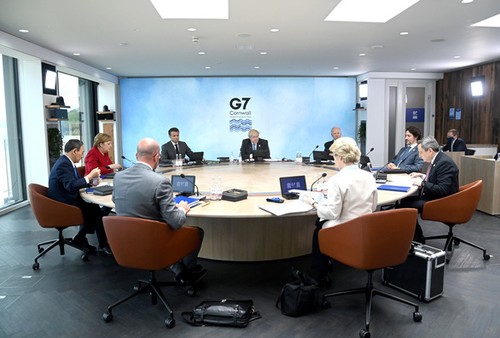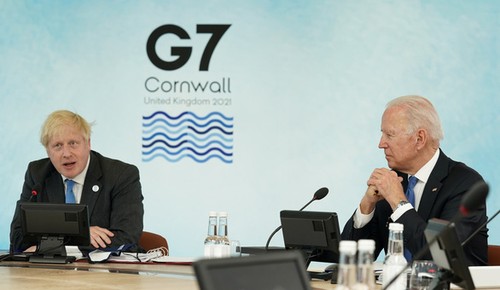 G7 leaders meet on June 11, 2021, in Cornwall, UK (Photo: G7 UK/Twitter) G7 leaders meet on June 11, 2021, in Cornwall, UK (Photo: G7 UK/Twitter)
|
The plan to build a better world is global in scope, from Latin America and the Caribbean to Africa to the Indo-Pacific. The different G7 partners will have different geographical orientations, but the overall initiative will include low- and middle-income countries.
Plan for a better world
The global reconstruction plan was announced at the G7 Summit in mid-June expressing a unified vision. Infrastructure development is considered the backbone of investment projects which are based on the principle of transparency. Projects must be financially sound to avoid pushing poor countries deeper into debt. Four areas of focus are climate, health and health security, digital technology, and gender equality. The G7 is committed to advancing this agenda within the multilateral system and working with partners from the Group of Developed and Emerging Economies (G20) and all international organizations for a cleaner, greener, freer, fairer, and safer future for people and the planet.
Implementation will not be easy
The Build Back Better World plan is good news for poor countries, but there has not been much specific information on paying for it. G7 economies are now struggling to recover from the COVID-19 crisis. The UK's cutting foreign aid reveals the difficulties it is facing and raises concerns about the ability to mobilize enough capital. Infrastructure projects require large amounts of capital from the private sector of G7 countries. Observers expect B3W projects to progress slowly.
 British Prime Minister Boris Johnson (left) sits next to US President Joe Biden during the G7 meeting on June 11, 2021. (Photo: REUTERS) British Prime Minister Boris Johnson (left) sits next to US President Joe Biden during the G7 meeting on June 11, 2021. (Photo: REUTERS)
|
Washington already has a budget for infrastructure development aid for poor countries, and the Biden administration is lobbying Congress to increase the sum. Washington will seek to make full use of its development finance tools, including the US International Development Finance Corporation (DFC), the US Agency for International Development (USAID), the Export-Import Bank of America (EXIM), the Millennium Challenge Corporation, the US Trade and Development Agency, and the Exchange Advisory Fund.
The White House said on June 12 that in addition to the billions of dollars the US has mobilized through existing bilateral and multilateral tools, the US Government will work with Congress to augment its development finance toolkit with the hope that, together with the private sector, other US stakeholders, and G7 partners, B3W will collectively catalyze hundreds of billions of dollars of infrastructure investment for low- and middle-income countries in the coming years.
Developing countries might have to accept conditions related to human rights, climate change, anti-corruption and a number of other legal provisions, if they want to join the project. The G7 needs to send the message that this plan is quite close to the strategic interests of developing countries. The Build Back Better World plan is more than just an economic development tool. It’s also a matter of strategic competition.